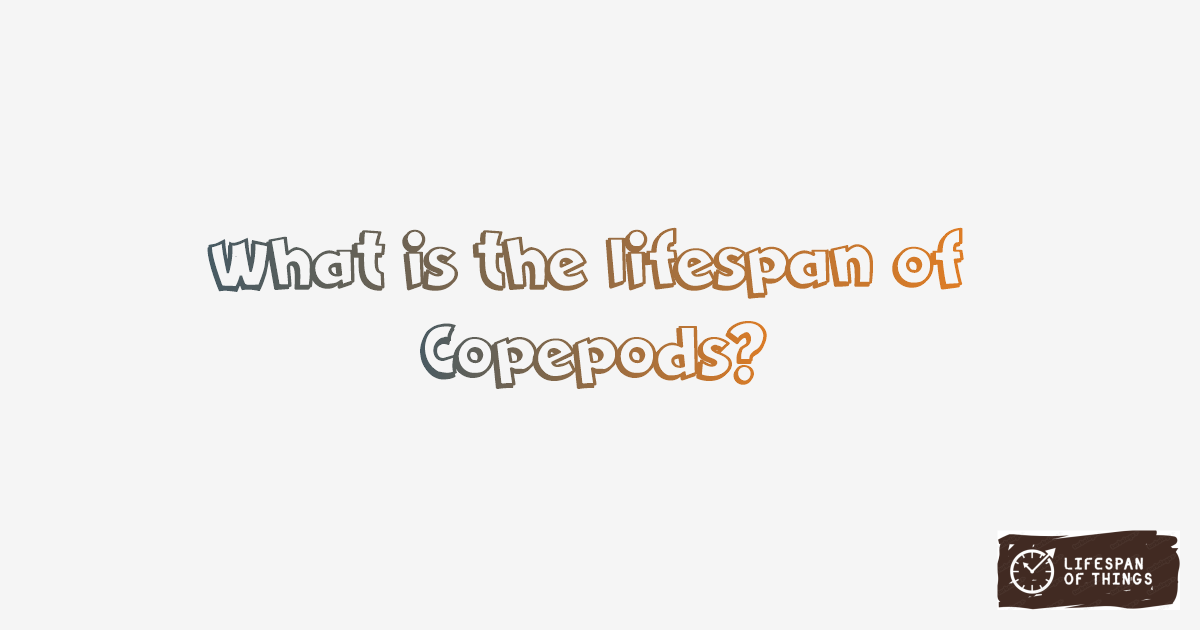
30 - 90 Days
Lifespan of Copepods is 30 - 90 Days. Copepods, tiny aquatic crustaceans, have a lifespan of 30-90 days. Factors influencing their lifespan include water quality, temperature, food availability, and predation pressure.
Useful Information
Copepods thrive in various aquatic habitats like oceans, freshwater lakes, and even puddles. They prefer temperatures ranging from 10-25 degrees Celsius, moderate levels of light, and clean water conditions for optimal survival.
Copepods serve as essential food sources for larger fish, whales, and birds, contributing to marine food chains. Their abundance influences nutrient cycling in marine ecosystems, supporting biodiversity and overall environmental balance.
Copepods play a vital role in fisheries and aquaculture by providing nutritious prey for fish larvae. They also help control algae blooms by consuming phytoplankton, contributing to water quality improvement in aquatic systems.
Certain copepod species can carry harmful parasites or diseases that may impact fish populations. Monitoring and maintaining proper water quality parameters can help prevent copepod-related issues in aquaculture operations. Implementing biosecurity measures can also reduce the spread of copepod-borne pathogens.
Understand the risks posed by certain microscopic animals as disease vectors, pests, and invasive species. Read more
Notable examples of copepods include the Calanus finmarchicus, a key species in marine ecosystems and a valuable food source for North Atlantic fish. Scientific research on copepod behavior and ecology continues to uncover their significance in marine food webs and global ecosystems.
Lifespan Comparisons
| Compared Item | Comparison Description |
|---|---|
| Lifespan of Rotifers | Copepods outlast Rotifers by a significant margin, with a lifespan several times longer. |
| Lifespan of Tardigrades | Tardigrades have a slightly longer lifespan than Copepods, lasting a few days more on average. |
| Lifespan of Nematodes | Nematodes have a considerably longer lifespan than Copepods, lasting years compared to days. |
| Lifespan of Hydra | Hydra have a similar lifespan to Copepods, lasting around the same number of days. |
| Lifespan of Lecane | Lecane have a shorter lifespan than Copepods, lasting significantly fewer days. |
| Lifespan of Milnesium tardigradum | Milnesium tardigradum have a slightly shorter lifespan than Copepods, lasting a day or two less on average. |
| Lifespan of Hypsibius dujardini | Hypsibius dujardini have a comparable lifespan to Copepods, lasting a similar number of days. |
| Lifespan of Ramazzottius oberhaeuseri | Ramazzottius oberhaeuseri have a lifespan slightly shorter than Copepods, lasting a day or two less on average. |
| Lifespan of Footballs | While Copepods have a short lifespan, footballs last significantly longer, with a lifespan measured in years. |
| Lifespan of Soccer Balls | Soccer balls, like footballs, have a lifespan significantly longer than Copepods, lasting several years. |
| Lifespan of Volleyballs | Volleyballs have a lifespan extending beyond that of Copepods, lasting several years more on average. |
| Lifespan of Tennis Balls | Tennis balls, similar to soccer balls, outlast Copepods by several years, providing long-lasting entertainment. |
| Lifespan of Dumbbells | Dumbbells have a lifespan significantly longer than Copepods, lasting several years for repeated use in strength training. |
| Lifespan of Resistance Bands | Resistance bands have a comparable lifespan to Copepods, lasting several years for effective workouts. |
| Lifespan of Yoga Mats | Yoga mats offer more longevity than Copepods, providing years of comfort and support for yoga practice. |
Frequently Asked Questions
Lifespan of Copepods is 30 - 90 Days.
Copepods thrive in various aquatic habitats like oceans, freshwater lakes, and even puddles.
Copepods serve as essential food sources for larger fish, whales, and birds, contributing to marine food chains.
Copepods play a vital role in fisheries and aquaculture by providing nutritious prey for fish larvae.
Certain copepod species can carry harmful parasites or diseases that may impact fish populations.
An example includes Calanus finmarchicus, a valuable food source for North Atlantic fish.








